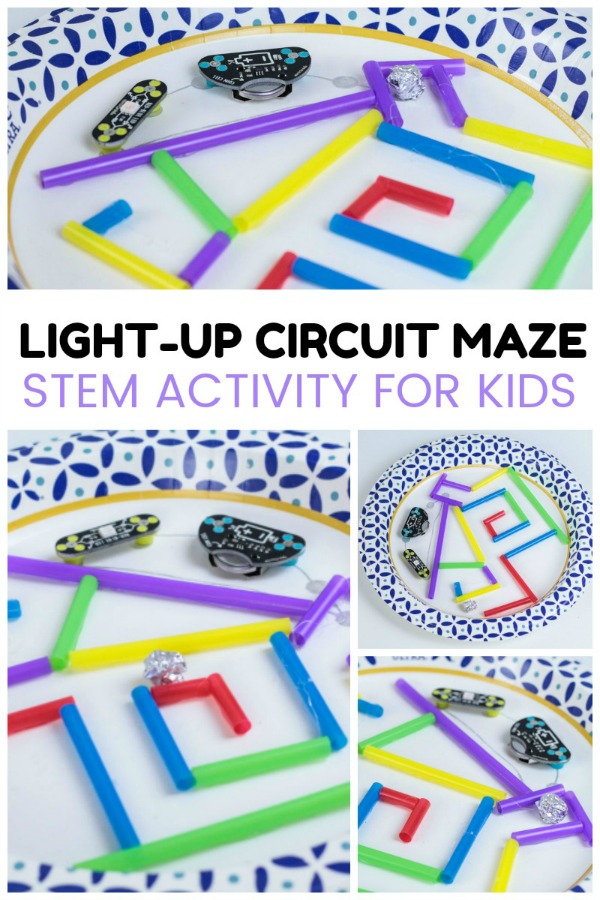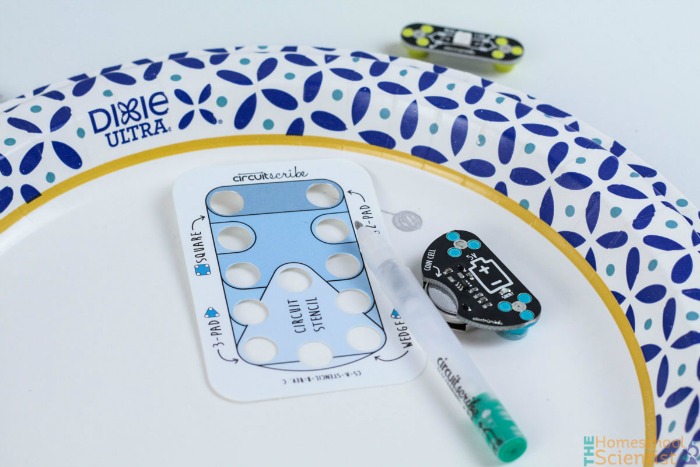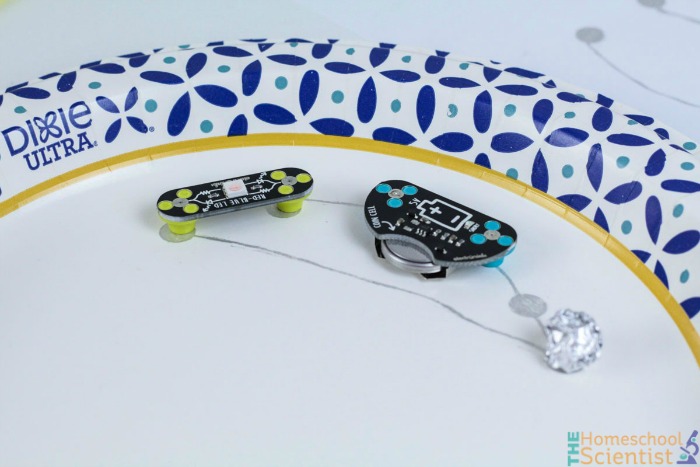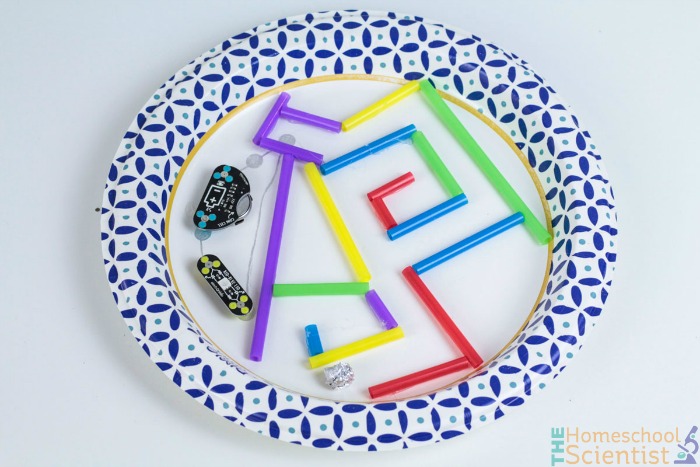Circuit Maze STEM Activity

Circuits may seem like advanced electrical engineering, but kids can learn the basics of circuits thanks to kits like the Circuit Scribe kit. Use these directions to make your own light-up circuit maze for a fun and exciting STEM activity for kids and a lesson in electrical engineering.
Related post: Make light up cards with circuit tape. Includes printable templates.
Related post: Christmas Lights STEM Activity
Circuit Maze Supplies

Making the Light-Up Circuit Maze

First, make sure your circuit works. For this project, you will need:
- Battery
- LED light
- Circuit pen
- Circuit stencil
- Magnetic backing
The trickiest part of this activity is getting the circuit pieces in place.

Use your stencil to draw two circle landing pads for the battery and the LED light. Connect one of the LED pads to the battery pad.
Draw another line from the second LED pad to another ink circle (this will be your maze finish line).
Draw a line from the finish circle to the open side of the battery circles. Use the photos for additional info on how to set up your circuit.
Place your circuit pieces onto the paper plate, and use the metal pad to keep them in place.
Make a ball from aluminum foil.
Turn on the battery and place the aluminum foil ball onto the finish pad. The LED light should light up. If it doesn’t, make sure you have enough ink in every circle and that there are no gaps in the line.
Once your circuit is up and running, you’re ready to design the maze.

Design the maze out of straws, securing with hot glue. Make sure that no glue covers any of the circuit ink, or this will cause the circuit to stop working.

When the maze is finished, tilt the plate to direct the foil ball from start to finish. When you reach the end, the LED light will light up!

How the Light-Up Circuit Maze Works
The ink in the Circuit Scribe pen is conductive metal. When an electrical charge flows from the battery, it travels along the ink to the next circle pad. The circuit is complete when the foil touches the finish pad, completing the circuit.
I love simple, fun ways to teach kids about circuits. This is one you can easily do at home with kids of all ages!
I hold a master’s degree in child development and early education and am working on a post-baccalaureate in biology. I spent 15 years working for a biotechnology company developing IT systems in DNA testing laboratories across the US. I taught K4 in a private school, homeschooled my children, and have taught on the mission field in southern Asia. For 4 years, I served on our state’s FIRST Lego League tournament Board and served as the Judging Director. I own thehomeschoolscientist and also write a regular science column for Homeschooling Today Magazine. You’ll also find my writings on the CTCMath blog. Through this site, I have authored over 50 math and science resources.


